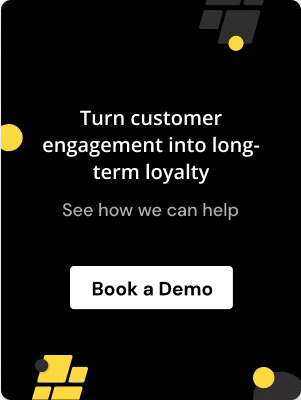.avif)
.avif)
Introduction
The Power of Customer Loyalty in E-commerce
In today's competitive e-commerce landscape, acquiring new customers can be costly and time-consuming. While customer acquisition is essential, many businesses overlook a crucial growth strategy: customer retention. This is where loyalty programs come into play. Not only do they encourage repeat purchases, but they also help build long-term customer relationships, which ultimately leads to increased sales. In this blog, we'll explore how loyalty programs can significantly boost your e-commerce sales and customer lifetime value (CLV).
1. Encouraging Repeat Purchases
Loyalty programs incentivize customers to return to your store by offering rewards for their repeat business. Whether it's points they can redeem for discounts or exclusive perks for frequent buyers, loyalty programs give customers a reason to choose your brand over competitors.
According to research, returning customers spend 67% more than new customers. This increase in spending is a direct result of the trust and comfort they’ve built with your brand over time. By offering rewards for every purchase, you're giving customers a strong incentive to shop more frequently, boosting your overall sales.
2. Increasing Average Order Value (AOV)
A well-structured loyalty program can encourage customers to spend more per order. Many programs offer tiered rewards, where customers unlock greater benefits by spending more. For example, a customer who spends $100 might earn more points or gain access to exclusive products compared to someone who spends $50.
This motivates customers to increase their cart value to take advantage of these rewards. By strategically designing your loyalty program, you can boost your average order value (AOV), leading to more significant sales growth without needing to acquire new customers.
3. Building Emotional Connections
Loyalty programs aren’t just about offering discounts—they also help foster emotional connections between your brand and customers. When customers feel valued and rewarded, they are more likely to stay loyal to your brand.
For instance, personalized rewards, such as birthday discounts or early access to sales, create a sense of appreciation and exclusivity. These emotional connections build customer loyalty, reducing the likelihood of churn and ensuring long-term relationships that contribute to sustained sales growth.
4. Reducing Customer Acquisition Costs
Acquiring new customers can be expensive, with costs that often outweigh the immediate revenue from their first purchase. On the other hand, retaining an existing customer through a loyalty program is much more cost-effective.
By focusing on customer retention and rewarding loyalty, you lower your overall customer acquisition costs. Instead of spending heavily on advertising to attract new shoppers, you can allocate resources to enhance your loyalty program, driving higher sales from your existing customer base.
5. Turning Customers into Brand Advocates
Loyalty programs can transform your customers inbto brand advocates. Happy, loyal customers are more likely to recommend your business to friends and family, leading to word-of-mouth marketing, which is one of the most effective ways to gain new customers.
Many e-commerce loyalty programs offer referral bonuses, where customers receive points or discounts for referring others. This not only strengthens your relationship with existing customers but also helps expand your customer base without large marketing investments. Referrals can significantly contribute to higher sales and greater brand visibility.
6. Collecting Valuable Customer Data
Loyalty programs provide a wealth of customer data that you can use to personalize marketing efforts, enhance the shopping experience, and drive more sales. You can analyze purchase history, preferences, and behavior to tailor product recommendations, promotions, and email campaigns.
By utilizing this data, you can deliver personalized experiences that make customers feel understood and appreciated, which leads to higher engagement and increased sales. Data-driven marketing is key to optimizing your loyalty program and maximizing its impact on your bottom line.
7. Increasing Customer Lifetime Value (CLV)
Customer lifetime value (CLV) measures the total revenue a business can expect from a single customer over time. One of the main goals of a loyalty program is to increase CLV by encouraging repeat purchases and fostering long-term loyalty.
Loyal customers are more likely to buy from your store multiple times and spend more with each purchase. By increasing CLV through a loyalty program, you can achieve sustained revenue growth without relying solely on new customer acquisitions.
Do you know?
Returning customers tend to spend 67% more than new customers? Implementing a loyalty program can dramatically increase your sales and customer lifetime value!
Conclusion
Boost Sales with a Loyalty Program
Incorporating a loyalty program into your e-commerce strategy can lead to significant sales growth. By encouraging repeat purchases, increasing average order value, building emotional connections, and turning customers into advocates, you can not only boost immediate sales but also set the foundation for long-term success.
Start by designing a loyalty program that rewards your customers for their continued business. Whether you're offering points, discounts, or exclusive perks, a well-executed loyalty program will keep customers coming back—and spending more.
FAQs
Start Building Customer Retention That Lasts




